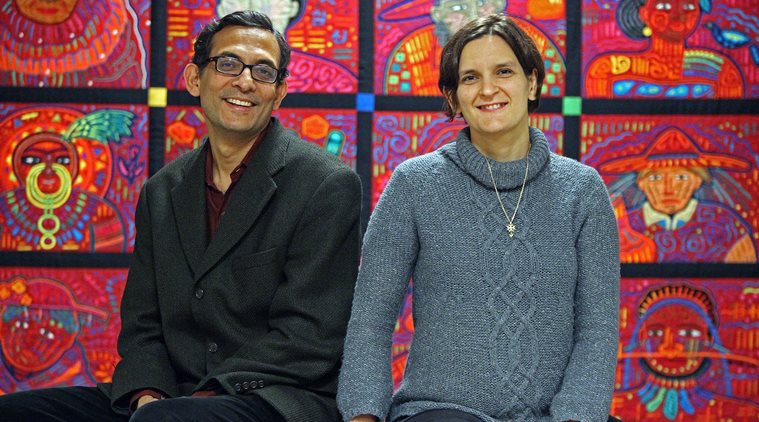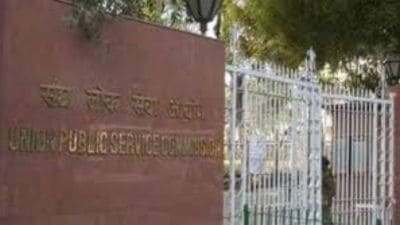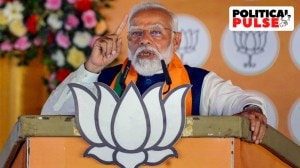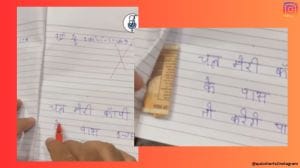- India
- International
Glimpses of Pratham’s 20-year partnership with Abhijit Banerjee and Esther Duflo
Over two decades, we have together learned how hard work on the ground and rigorous research can help to evolve solid solutions to one of the big problems facing primary education in India today.
 Abhijit Banerjee and Esther Duflo. (File Photo)
Abhijit Banerjee and Esther Duflo. (File Photo)
Little did we know when we embarked together on a journey 20 years ago, that the path from Mumbai’s municipal schools would eventually lead to Stockholm and a Nobel prize. A tall, thin economics professor from MIT and his youthful looking colleague showed up one day in our cramped office near Grant Road in Mumbai. This is the first time we met Abhijit Banerjee and Esther Duflo. They were interested in the education programme that we were doing at the time in with municipal schools in Mumbai, especially in how we were helping children learn to read and do simple arithmetic.
Even as early as 1999, the problem was quite visible. School enrollment levels were high and large cohorts moved each year from one grade to the next. However, despite being in school for several years, many children were well below what was expected of them at their grade. Many could not read a simple text fluently or do basic math operations. Without these foundational skills, it was difficult for a child to engage with her class-level curriculum or make meaningful progress in the school system.
The “balsakhi” programme conducted by Pratham in Mumbai municipal schools from 1998 onwards was perhaps India’s first in-school large-scale remedial program. A volunteer from the neighbourhood worked with children from Class 3 and 4 for a few hours a day in “pull out” classes. Abhijit and Esther studied this programme by randomly allocating the intervention to Class 3 classes in some schools and to Class 4 in others. “Treatment” groups were compared with “control” groups. It was our first first-hand experience of a randomised control trial (RCT) as well as our first external impact evaluation. At the end of two years of research, it was clear that the “catch up” effort carried out by the volunteers was working: There was a significant improvement in children’s ability to read and to do arithmetic in the treatment schools as compared to those where the intervention had not taken place. The balsakhi study paved the way for larger scale programmes to address the issue of “catch up” and it led to an ongoing, vibrant collaboration between Pratham and the researchers.
In 2006, the all-India ASER exercise provided data on the status of schooling and learning for every rural district in the country. It became evident that the learning crisis was widespread. The ASER data clearly showed that in every grade, there was a wide range of learning levels. For instance, in reading, about half of all children enrolled in Class 5 could read fluently at a Class 2 level and may be could read at higher levels too. But in the other half, some children were still struggling to recognise letters, others could just about read simple words and the remainder were reading simple sentences but unable to handle long texts even at the Class 2 level. As Abhijit often puts it, this situation is at least partly because the school system in India is geared to teach to the “top of the class”.
In developing an approach to enable children to “catch up”, for some time in the school day and for some time in the school year, Pratham groups children, especially those in Class 3, 4 and 5, by their current learning level rather than by their grade. Using methods and materials appropriate for each group, instructors or teachers work with the full big group, then with small groups and with individual children to help them acquire literacy and numeracy skills. In a short period of time — as little as 50 or 60 days — most children begin to read fluently and are able to do basic arithmetic comfortably.

Pratham’s decade-long efforts in improving the effectiveness of this approach and in improving delivery on scale has been accompanied by a series of RCTs in different parts of the country. Under Abhijit and Esther’s leadership, their group of researchers at the Abdul Jamil Poverty Action Lab (JPAL) have carried out studies in Jaunpur (UP) in 2006, West Champaran (Bihar) and Dehradun (Uttarakhand) 2008-2010, Kurukshetra and Mahendragarh (Haryana) 2012 and Unnao and Sitapur (UP) in 2013. It is unusual even in the world of research to have a series of studies that look at the evolution of an instructional approach over time and study it in different implementation contexts.
As the news about Abhijit and Esther’s Nobel Prize spread, there was tremendous excitement across all the locations — urban communities and rural areas where they have worked with us. Over two decades, we have together learned how hard work on the ground and rigorous research can help to evolve solid solutions to one of the big problems facing primary education in India today.
This article first appeared in the print edition on December 10, 2019 under the title ‘Classroom To Stockholm’. Banerji is with Pratham Education Foundation.
40 Years Ago
EXPRESS OPINION
More Explained
Apr 16: Latest News
- 01
- 02
- 03
- 04
- 05









































